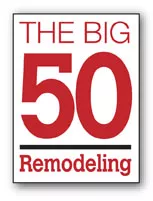How to Choose Energy Efficient Windows & Trim Your Bill
With the summer heat right around the corner and an increase in energy costs of up to 70% in some Connecticut, Massachusetts and other Northeastern areas, you might want to consider making sure your windows are properly insulated, which will save you a few bucks down the road.
According to the US Department of Energy, windows account for 10-25% of a heating bill by letting energy leak out of the house. These faulty windows mean wasted energy and increased costs for you. Be sure to feel around baseboards, windows, doors or anywhere where two different building materials meet for air leaks. If you find leaks in your home, a quick fix is caulking or sealing the leak. However, in older or inefficient windows, it is more cost-effective to replace them with energy efficient replacement windows.
With its added protection, energy efficient windows reduce heating, cooling and lighting costs. When shopping around for new replacement windows, it is important to know what to look for so you can achieve ultimate cost savings. Here’s what to look for.
Energy Star Logo: Energy Star is a government program designed to help businesses and homeowners save money while protecting the environment. Energy Star tests, identifies and recommends products that are energy-efficient, reduce energy consumption and reduce pollution, among many other practices. That’s why it’s important to look for windows with the Energy Star seal of approval.
U-Factor: A U-Factor is a performance rating that measures the rate of heat transfer and indicates window’s insulation quality. The U-Factor ranges from .25 to 1.25 Btu/h’ft”’F, and the lower the measurement, the better the insulation. For Connecticut and other states in New England, a window with a low U-Factor will reduce the amount of heat that is lost, which reduces your energy bill and saves you money!
Solar Heat Gain Coefficient Rating (SHGC): Another performance rating that measures the amount of solar energy transmitted through the window and thus how well the window blocks heat from the sunlight. Measured on a scale of 0-1, a low SHGC rating means more solar heat is being blocked, which lowers cooling costs. It is important to determine these factors based on where you live. Due to the cold climate in Connecticut, Mass and the New England areas, a higher SHGC is recommended.
Air Leakage (AL): This performance rate measures the rate at which air passes through any cracks in the window frame. The lower the AL value, the less air leakage exists. It is extremely important to have a low AL value so that as little energy as possible can escape.
Condensation Resistance: Scored on a scale from 0-100, condensation resistance measures how well the window can resist water and moisture build-up. The higher the rating, the better the window performance and less build-up it allows.
Vinyl Frame: Vinyl frames are made of polyvinyl chloride and ultraviolet light stabilizers in order to prevent sunlight from breaking through the window. Additionally, the frame is filled with insulation which prevents moisture from settling and is thermally superior to other type of frames.
Possible Tax Credit: Some Energy Star products are eligible for a federal tax credit, among other awesome incentives. The amount can be up to 10% of the window cost if it is Energy Star qualified. See if you qualify here.
Fiderio & Sons would be honored to help you reduce your summer energy bill by installing our energy efficient replacement windows. Visit our showroom today or fill out our online form for a free quote!












